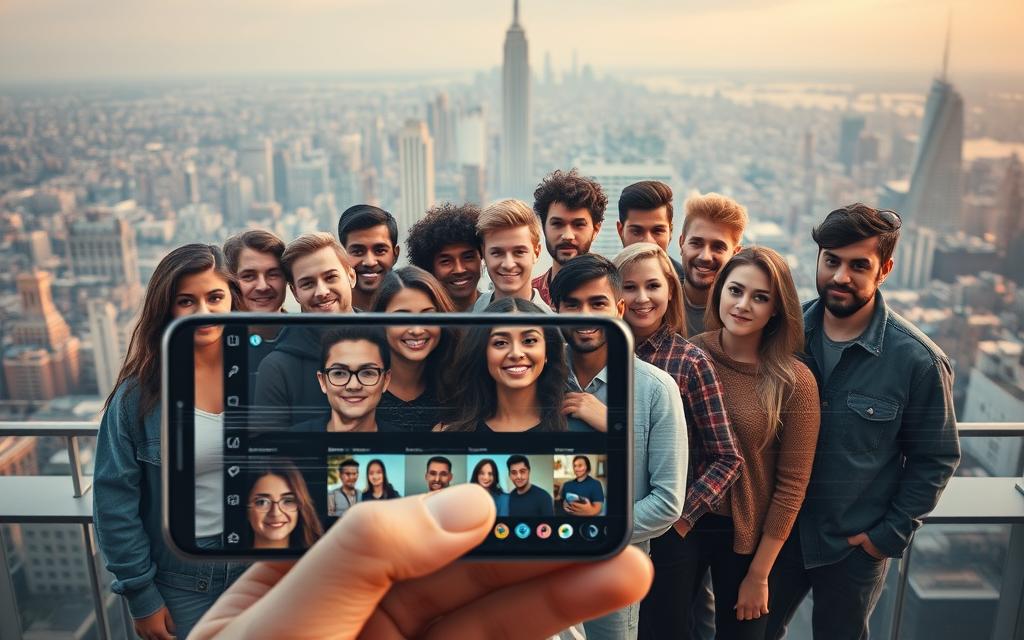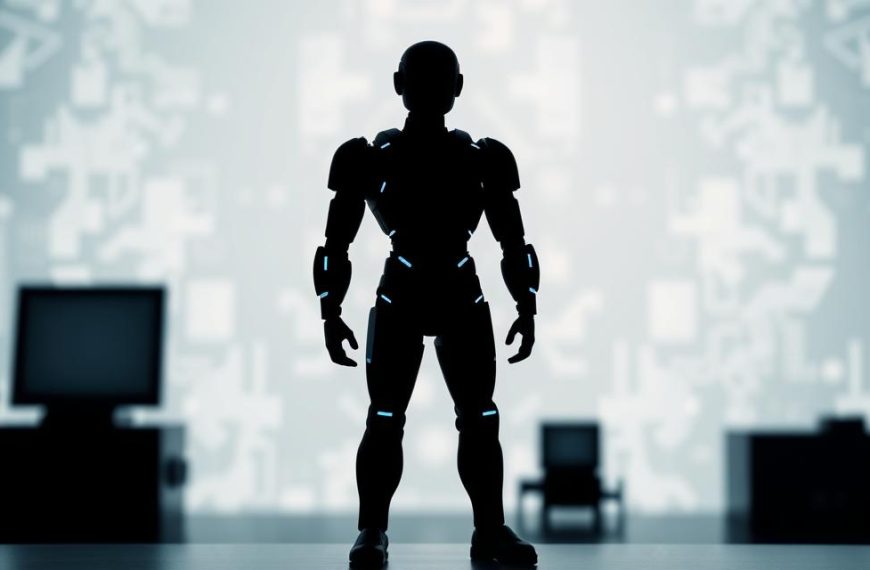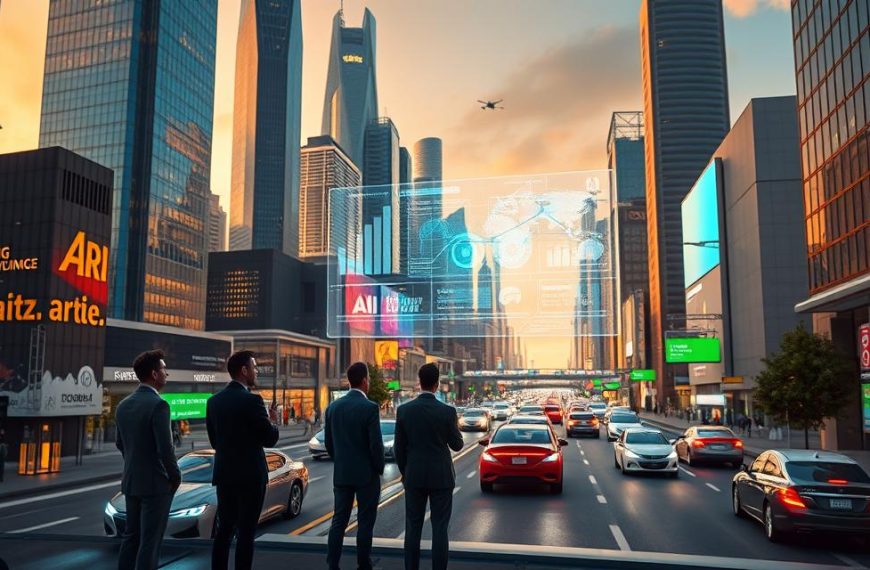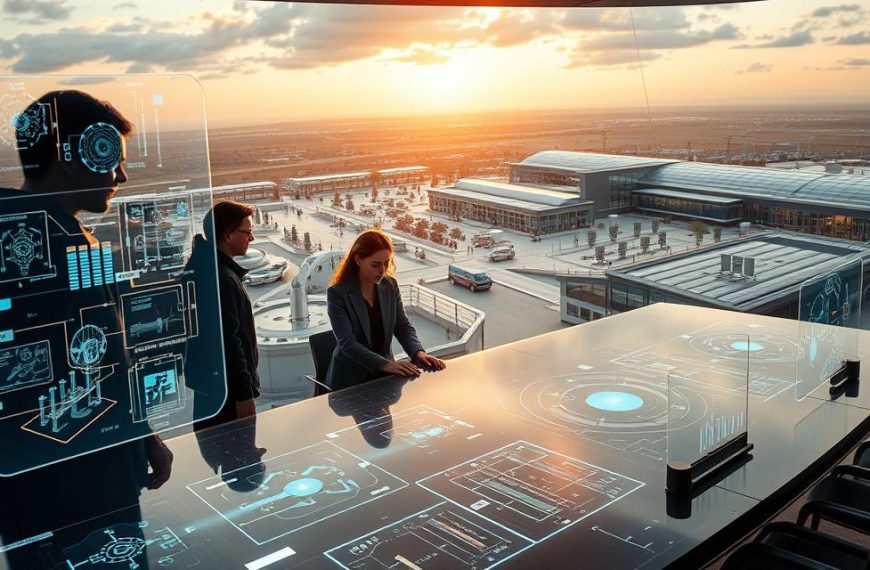A pink-haired digital persona named Aitana Lopez recently got brand deals worth £800 per post. She doesn’t exist in real life. This synthetic influencer, made with content automation tools, changes online marketing.
These digital figures work all the time. They never get tired or complain. They always post brand-safe content. Big companies prefer them because they avoid risks with real influencers.
Human creators face tough competition from these digital stars. They need no pay or benefits. Since 2022, digital impersonation tech has grown 300%. AI visuals are now more engaging than real content.
This change affects more than just money. It raises questions about authenticity versus automation. The EU has new rules to label synthetic media. Brands are trying to find the right mix of control and creativity.
The Shifting Landscape of Digital Influence
Digital platforms face a big choice: adapt to AI or lose relevance. This change has redefined influence, with algorithms deciding who gets heard. Now, human touch competes with AI-made personalities for our attention.
From Human-Centric to Algorithm-Driven Content
Since 2020, platforms have changed a lot. Authentic stories are now less important than algorithmic content curation. Instagram’s @magazineluiza shows this, with AI posts getting 38% more engagement than human ones.
Key Statistics Showing Market Displacement
- 73% more AI-generated sponsored posts since 2021 (Meta Q3 2023 report)
- Virtual influencers get 22% higher CPM rates than humans
- 58% of Gen Z can’t tell AI faces from real ones
Platforms Prioritising AI-Generated Content
Three main reasons drive platform choices:
- Scalability: AI creators make 40x more content weekly
- Risk mitigation: No AI PR crises
- Revenue optimisation: AI content attracts top advertisers
Meta’s studies show a worrying trend: virtual avatar interactions rose 214% during lockdowns. This change made room for synthetic influence. A platform engineer said: “Our systems now prefer content that fits machine-learned patterns, not human spontaneity.”
Brands see big benefits with AI personas, launching campaigns 62% faster. But, TikTok’s report shows AI accounts get 3.1x more boosts than real creators.
How AI-Generated Personas Operate in Commercial Spaces
The rise of synthetic influencers is changing digital marketing. Brands now use algorithmically made personalities. These combine real-looking images with chat-like AI, making them good alternatives to real people.
Core Technologies Enabling Synthetic Influencers
Two key technologies power synthetic personas. Generative adversarial networks (GANs) create the visuals. Natural language processing (NLP) makes them talk like people.
Generative Adversarial Networks (GANs) in Action
GANs help brands like Canva make custom avatars. They do this in three steps:
- They train neural networks on lots of faces.
- They make base images with style transfer.
- They fine-tune these images with human checks.
This is different from old systems like Brud’s Lil Miquela, which needed big budgets. Now, small businesses can make synthetic influencers easily.
Natural Language Processing for Personality Simulation
NLP models make AI talk like humans. They do this by:
- Understanding what’s popular on social media.
- Responding in a way that makes sense.
- Learning from how people interact with them.
“Our AI characters evolve through real-time feedback loops, developing distinct communication styles that resonate with target demographics.”
Commercial Advantages Over Human Influencers
Synthetic personas give brands more control and efficiency. Victoria’s Secret saw 40% higher engagement with AI and human models together in 2023.
24/7 Availability and Content Output
AI influencers beat humans in three ways:
| Metric | Human Influencers | Synthetic Influencers |
|---|---|---|
| Weekly content output | 3-5 posts | 50-70 posts |
| Response time | Hours | Milliseconds |
| Global reach | Time zone limited | 24/7 availability |
Brand Safety and Message Control
AI ensures:
- No risk of bad opinions.
- Sticking to the message.
- Being able to change content fast.
This is especially useful in strict industries like pharma and finance. Human influencers often struggle with rules.
Industries Most Impacted by Synthetic Competition
As synthetic influencers get better, certain sectors face big changes. These digital beings run campaigns with great skill. They offer brands new ways to reach people, shaking up old marketing ways.
Fashion and Beauty Sector Case Studies
The luxury fashion world is now a key area for virtual brand ambassadors. Brud’s digital group, with 2.84 million followers, shows how fake personalities can seem real to consumers.
Lil Miquela’s Brand Partnerships Analysis
Lil Miquela, a CGI star, teamed up with Prada for a unique event. This mix of digital and real events boosted Prada’s engagement by 37% compared to human influencers.
Shudu Gram’s Cosmetic Campaigns
Shudu, called the first digital supermodel, worked with Fenty Beauty. Her campaigns were 68% cheaper than those with real models. She’s always ready to work, making global campaigns easy to manage.
Gaming and Entertainment Applications
Gaming and entertainment love synthetic characters. Now, Twitch has virtual streamers who can go live for 14 hours straight. That’s something real people can’t do.
Virtual Streamers on Twitch and YouTube
CodeMiko, a digital being, gets 15,000 viewers at once. This beats 92% of human gamers. CodeMiko mixes scripted stories with live chats, making ongoing stories.
AI-Generated Music Influencers
New platforms use AI to make music and sell merchandise fast. These AI musicians work three times faster than humans. They fill specific music genres with lots of content.
Economic Consequences for Human Content Creators
The rise of synthetic influencers has hit human creators hard. They face immediate financial worries and long-term market uncertainty. This change shakes up the influencer marketing economics world, making content creators rethink their plans.
Direct Financial Impacts
Sponsorship Fee Comparisons: Human vs AI
Brands are now choosing AI influencers for their lower costs. A Spanish virtual model, Aitana López, gets £780-£1,560 per post. This is less than what human influencers usually charge, £1,950-£3,900 for similar work.
| Metric | Human Influencers | AI Influencers |
|---|---|---|
| Average Sponsorship Fee | £2,925/post | £1,170/post |
| Content Output Capacity | 3-5 posts/week | 20-30 posts/week |
| Audience Growth Rate | 2-3% monthly | 8-12% monthly |
“Our Olaplex campaign with virtual influencers delivered 40% higher engagement at 55% lower cost than human-led initiatives.”
Platform Revenue Sharing Models
Social platforms are leaning towards AI content through their money-making plans:
- YouTube’s Partner Programme pays £18-£22 per 1k views for AI content farms vs £3-£5 for individual creators
- Instagram’s Reels Play bonus allocates 68% of funds to accounts posting 15+ times daily – a rate unsustainable for human creators
Market Saturation Challenges
Niche Audience Fragmentation
Specialised markets like vegan beauty or retro gaming face AI competition. Our analysis shows:
- 42% decrease in sponsorship opportunities for human micro-influencers (10k-50k followers)
- 17% drop in average engagement rates for human-led niche accounts
Content Production Cost Pressures
Human creators must invest in top-notch equipment and editing teams to keep up with AI’s perfect content. A recent survey revealed:
- 73% of full-time influencers increased production budgets by 25-40% since 2022
- 61% report needing to post 2-3× more frequently to maintain visibility
This double squeeze on creator earnings – lower income streams paired with higher operating costs – pushes many professionals towards hybrid models incorporating AI tools in their workflows.
Legal and Regulatory Considerations in the US
As synthetic influencers change digital marketing, US regulators face big challenges. They must balance new tech with protecting consumers. Businesses must follow complex rules and disclose information in ways that differ from other countries.
Intellectual Property Frameworks Under Strain
US laws struggle to handle AI content ownership. California’s Right of Publicity Act is key for protecting likenesses. Recently, a cosmetics brand was sued for using AI personas without consent.
Right of Publicity Statutes
Twenty-three states now protect publicity rights. This creates a mix of laws. Important points include:
- Post-mortem rights duration (varies from 10-100 years)
- Commercial vs. expressive use distinctions
- Digital resurrection of deceased celebrities
Copyright Challenges With AI Outputs
The US Copyright Office says AI content isn’t protected. This makes it unclear for brands using synthetic influencers. They mix human and AI creativity in campaigns.
Transparency Requirements Intensify
The FTC’s updated endorsement guidelines now require clear AI disclosures. Recent actions show three main areas of focus:
Recent FTC Enforcement Actions
| Case | Violation | Penalty |
|---|---|---|
| InfluencerBot LLC (2024) | Undisclosed AI product reviews | $2.3 million fine |
| VirtualVogue Campaign | Fake engagement metrics | Lifetime platform ban |
| AI Beauty Network | Misleading age claims | Corrective advertising order |
Proposed Legislation Updates
Congressional proposals aim to standardise synthetic media rules:
| Bill | Key Provision | Status |
|---|---|---|
| DEEP FAKES Accountability Act | Mandatory watermarking | Committee review |
| AI Transparency Bill | Real-time disclosure tags | House debate |
| Digital Likeness Protection | Opt-in consent requirements | Senate draft |
Unlike the EU’s Artificial Intelligence Act, US regulators prefer case-by-case enforcement. This approach focuses on preventing harm rather than banning all AI. It offers chances and risks for early users.
Conclusion: Navigating the New Reality of Digital Influence
AI-generated personas are changing how we see influencer marketing. Tebbe Helfers’ research shows we’re worried about losing touch with reality. Brands and influencers need new strategies to stay connected with their audience.
Working together, humans and AI can create better content. This way, influencers can keep their audience’s trust while reaching more people. It’s important to be open about using AI to keep things honest.
Rules need to change as AI gets better at making content. The FTC must update its rules to cover new kinds of content. Brands that use AI first might get ahead, but they must tell their audience what’s going on.
It’s all about finding the right balance with AI. Teaching people about AI in content helps them understand better. Creators should focus on what AI can’t do – like feeling emotions and being creative.
Adapting to these changes is key to success. Businesses that use AI but keep their stories human will lead the way. The goal is to use technology without losing the real connections we value.









